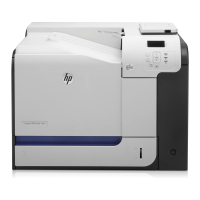Using RUN and #NEWPROCESS Options
Initiating and Communicating With Processes
5–2 107365 Tandem Computers Incorporated
Communicating with a process through $RECEIVE, using #REQUESTER,
#APPEND(V), and #EXTRACT(V).
This method uses the following type of communication:
TACL
Process such
as a device
OPEN
WRITEREAD
CLOSE
REPLY
Processing completion information
You can use the Define Process (DP) facility (not part of TACL) to communicate with
processes if your system has ViewPoint software. See “Using DefineProcess,” later in
this section.
Section 6, “Running TACL as a Server,” describes how to access TACL as a server
process.
Initiating a Process The RUN command and #NEWPROCESS built-in function allow you to start a
process. For example, the following statement starts FUP:
#NEWPROCESS $SYSTEM.SYSTEM.FUP /CPU 3, NAME $FUP/
Using RUN and
#NEWPROCESS Options
TACL provides RUN and #NEWPROCESS options that allow you to specify whether
your TACL process waits for the new process to finish or not. In addition, TACL
provides commands and a RUN and #NEWPROCESS option (IN) that send startup
information to the new process. Table 5-1 lists these options and commands.
Table 5-1. RUN and #NEWPROCESS Communication Options
Communication Requirements at Startup Time
Associated RUN or #NEWPROCESS
Options and TACL Commands
Start a process and wait for it to finish; no communication None
Start a process and return to TACL immediately; no
communication
NOWAIT option
Start a process and pass information at startup time ASSIGN, PARAM, and DEFINE
commands; IN option
TACL also provides RUN and #NEWPROCESS options that support communication
to the new process. For information about these options and other related functions,
see “Communicating With a Process,” later in this section.
The SPI and EMS interfaces provide programmatic interfaces to processes. For
additional information, see Section 7, “Using Programmatic Interfaces.”

